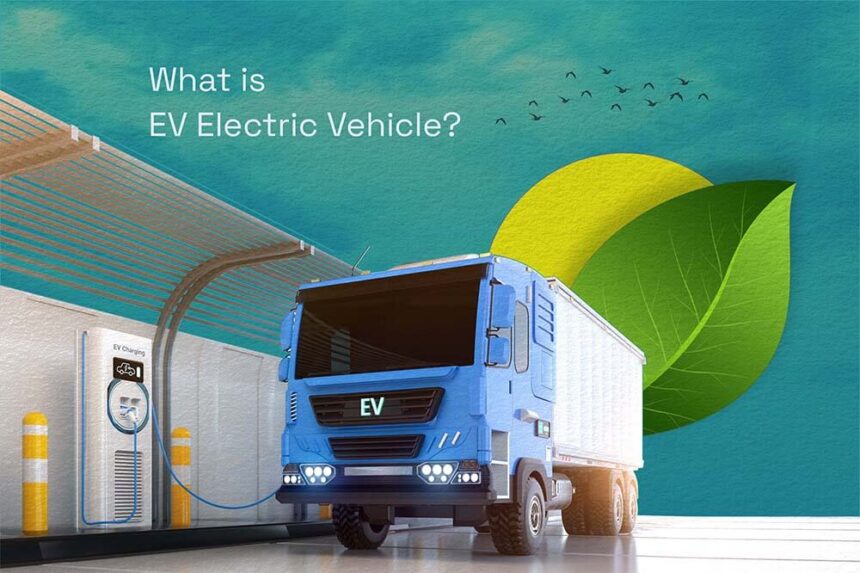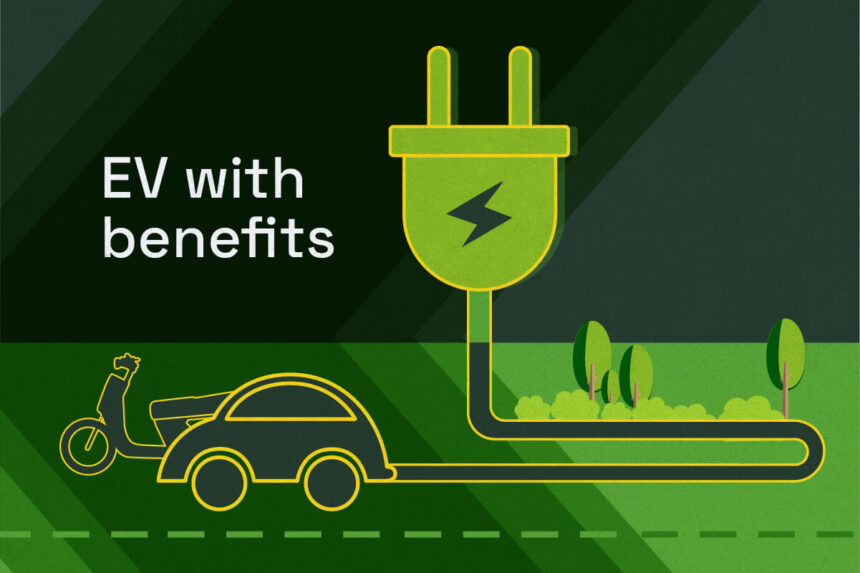Electric vehicles (EVs) have gained significant popularity in recent years due to their environmental benefits and technological advancements. As more people consider making the switch to EVs, it’s essential to examine the safety features that make them a reliable mode of transportation. In this article, we will delve into various aspects of EV safety, including crashworthiness, battery safety, fire safety, electrical safety, advanced driver assistance systems (ADAS), and government regulations. Let’s explore how electric vehicles ensure the safety of their occupants and address common safety concerns.
Introduction
As the world moves towards sustainable transportation, electric vehicles are playing a pivotal role in reducing carbon emissions. However, concerns about the safety of EVs still linger in the minds of potential buyers. It is crucial to understand that EVs undergo rigorous testing and adhere to safety regulations, making them a safe option for daily commuting.
Importance of Safety Features in Electric Vehicles
Safety is a top priority for automobile manufacturers, and EVs are no exception. In fact, electric vehicles often incorporate advanced safety features that go beyond those found in traditional internal combustion engine (ICE) vehicles. These safety features are designed to protect occupants and mitigate the risks associated with driving on the road.
Crashworthiness and Occupant Protection
One of the key aspects of EV safety is crashworthiness, which refers to the vehicle’s ability to protect occupants during a collision. EV manufacturers employ various engineering techniques and materials to enhance crashworthiness, such as reinforced frames, crumple zones, and advanced airbag systems. These measures help minimize the impact forces transferred to the occupants, reducing the risk of severe injuries.
Battery Safety
The battery pack is an integral component of an electric vehicle, and ensuring its safety is of paramount importance. EV manufacturers implement multiple safety mechanisms to prevent battery-related incidents. These include thermal management systems, battery enclosures, and dedicated safety circuits. In the rare event of a battery-related incident, such as thermal runaway, EVs have safety protocols in place to contain and mitigate the situation effectively.
Fire Safety
Concerns about the potential for fires in EVs often arise due to the presence of high-voltage battery packs. However, it’s important to note that EVs have robust fire safety measures in place. The battery packs are designed to withstand extreme conditions and are equipped with fire suppression systems. Additionally, EVs use non-flammable electrolytes in their batteries, further reducing the risk of fire incidents.
Electrical Safety
EVs operate using high-voltage electrical systems, raising questions about electrical safety. Manufacturers ensure that all electrical components are well-insulated and protected, minimizing the risk of electric shocks. Strict safety standards are followed during the manufacturing process, and thorough testing is conducted to ensure the integrity of the electrical systems in EVs.
Advanced Driver Assistance Systems (ADAS)
Electric vehicles often come equipped with advanced driver assistance systems (ADAS) that enhance safety on the road. These systems include features such as adaptive cruise control, lane-keeping assist, automatic emergency braking, and blind-spot monitoring. ADAS technologies help prevent accidents by alerting drivers to potential hazards and even intervening when necessary.
Collision Avoidance Systems
In addition to ADAS, EVs also incorporate collision avoidance systems that utilize sensors and cameras to detect obstacles and provide warnings to the driver. These systems can actively intervene by applying brakes or steering inputs to prevent or minimize the impact of a collision. By combining ADAS and collision avoidance systems, electric vehicles offer an extra layer of safety to their occupants.
Regenerative Braking
Regenerative braking is a unique feature in electric vehicles that not only contributes to energy efficiency but also enhances safety. When the driver applies the brakes, the electric motor acts as a generator, converting kinetic energy into electrical energy and slowing down the vehicle. This reduces the wear on traditional friction brakes and improves braking efficiency, ultimately leading to shorter stopping distances and improved control.
Maintenance and Inspection
Proper maintenance and regular inspections are essential to ensure the ongoing safety of electric vehicles. EV manufacturers provide guidelines for routine maintenance, including battery health checks and software updates. Additionally, trained technicians are equipped to handle any specific maintenance requirements of EVs, contributing to their overall safety and performance.
Government Regulations and Safety Standards
Governments worldwide have recognized the importance of electric vehicle safety and have implemented stringent regulations and safety standards. These regulations cover various aspects, including crash testing, battery safety, electrical system standards, and manufacturing practices. Compliance with these regulations ensures that electric vehicles meet the necessary safety requirements before being sold to consumers.
Safety Ratings for Electric Vehicles
To help consumers make informed decisions, independent organizations such as the National Highway Traffic Safety Administration (NHTSA) and the Insurance Institute for Highway Safety (IIHS) provide safety ratings for electric vehicles. These ratings assess various safety aspects, including crashworthiness, occupant protection, and advanced safety features. Checking the safety ratings can assist buyers in selecting EVs that meet their safety expectations.
Comparing Electric Vehicle Safety to Internal Combustion Engine (ICE) Vehicles
When evaluating the safety of electric vehicles, it is essential to compare them to their internal combustion engine counterparts. While both types of vehicles undergo rigorous safety testing, EVs often have additional safety features, such as lower centers of gravity and a reduced risk of fuel-related incidents. However, it’s important to note that the overall safety of a vehicle also depends on factors such as driving behavior, road conditions, and maintenance.
Addressing Common Safety Concerns
There are several common safety concerns associated with electric vehicles, including range anxiety, charging infrastructure, and battery degradation. It’s important to address these concerns to provide a comprehensive understanding of EV safety. Range anxiety can be mitigated by advancements in battery technology and the growing availability of charging stations. Battery degradation is a natural process, but manufacturers provide warranties and guidelines to ensure the longevity and safety of EV batteries.
Conclusion
Electric vehicles have come a long way in terms of safety, with robust engineering, advanced safety features, and compliance with regulations. The comprehensive safety measures implemented in EVs make them a safe and reliable option for transportation. As technology continues to evolve, electric vehicles will only become safer, offering a greener and sustainable future for mobility.
FAQs
- Are electric vehicles more prone to fires compared to gasoline-powered cars? Electric vehicles have robust fire safety measures in place, and the risk of fires is extremely low. The battery packs in EVs are designed to withstand extreme conditions and are equipped with fire suppression systems. Additionally, EVs use non-flammable electrolytes in their batteries, further reducing the risk of fire incidents. It’s important to note that gasoline-powered cars have their own fire risks associated with flammable fuels.
- Do electric vehicles have a higher risk of electrical malfunctions or shocks? Electric vehicles are designed and manufactured with strict safety standards in place to minimize the risk of electrical malfunctions or shocks. All electrical components in EVs are well-insulated and protected, ensuring the safety of the occupants. Manufacturers conduct thorough testing to ensure the integrity of the electrical systems in EVs, providing peace of mind to drivers and passengers.
- What safety measures are in place to protect the occupants in an EV during a collision? Electric vehicles prioritize occupant safety, and various measures are in place to protect occupants during a collision. EVs often incorporate reinforced frames, crumple zones, and advanced airbag systems, which help minimize the impact forces transferred to the occupants. Additionally, EVs undergo rigorous crash testing to ensure they meet safety standards and provide a safe environment for the occupants.
- Are electric vehicles subjected to the same safety standards as traditional cars? Electric vehicles are subjected to the same stringent safety standards as traditional internal combustion engine (ICE) vehicles. Governments worldwide have implemented regulations and safety standards that encompass crash testing, battery safety, electrical system standards, and manufacturing practices. Compliance with these regulations ensures that electric vehicles meet the necessary safety requirements before being sold to consumers.
- How do electric vehicle safety ratings compare to those of internal combustion engine vehicles? Electric vehicles undergo safety testing and receive safety ratings, just like internal combustion engine vehicles. Independent organizations such as the National Highway Traffic Safety Administration (NHTSA) and the Insurance Institute for Highway Safety (IIHS) provide safety ratings for both types of vehicles. These ratings assess various safety aspects, including crashworthiness, occupant protection, and advanced safety features. Comparing safety ratings can provide valuable insights into the safety performance of electric vehicles compared to traditional cars.







